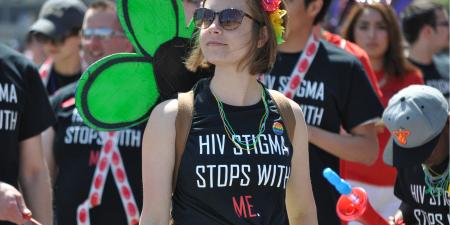Abstract
Some patients degrade, belittle, or harass clinicians and students based on their social identity characteristics, such as their race, gender, ethnicity, or religion. Some patients even refuse care. While this kind of behavior is difficult for all health care workers, it presents unique challenges for trainees. This article offers concrete protocols for supporting trainees when such patient encounters occur, including assessment, debriefing with affected staff, convening team meetings, event tracking, data collection, and initiating organizational cultural changes.
Introduction
A resident physician enters a patient’s room to introduce herself, but before she can do so the patient turns to the nurse and declares, “I don’t want any black doctors!” How should the health care organization respond? This question is on the minds of many, as a 2017 survey found that 59% of responding physicians had been degraded, belittled, or harassed by patients based on their social identity characteristics, such as their race, gender, sexual orientation, religion, or ethnicity.1,2 In addition, 47% of the surveyed physicians had a patient request reassignment because of such social identity characteristics.1,2 Black and Asian physicians were most likely to experience patient bias, which affected 70% of black physicians and 69% of Asian physicians.2 More than simply rude or disruptive, this patient behavior can include inappropriate conduct, comments, jokes, and innuendo as well as epithets, slurs, negative stereotyping, displays of offensive materials, unwelcome physical contact or verbal abuse, and reassignment demands. While this behavior is difficult for all health care professionals, it presents unique challenges for frontline workers, particularly trainees. This article outlines the problem of patient bias and offers concrete protocols for supporting trainees based on grand rounds that I have conducted since 2016 at medical organizations throughout the United States, which have sparked a broader conversation on this issue.3
Overview of Challenges Posed by Patient Bias
Patients who engage in biased behavior pose multiple clinical challenges. Such behavior can undermine the relationship between patient and health care worker necessary to provide high quality care, disrupt team harmony and the learning environment, and take an emotional and psychological toll.4 As I will explain, this behavior also has significant legal, ethical, and policy implications for health care workers’ employment rights, patients’ informed consent rights, and health care organizations’ obligations to safeguard patient health while protecting employees from workplace discrimination.
Determining how to balance these often-competing interests presents a difficult dilemma, particularly in hospital emergency departments, which have an obligation to screen and stabilize, if necessary, all patients who seek treatment in accordance with the Emergency Medical Treatment and Active Labor Act (EMTALA).5 Patients also have informed consent rights, which encompass the right to refuse wanted treatment from an unwanted physician. Health care workers have employment rights, including the right to a workplace free from certain types of discrimination, such as discrimination based on race, sex, ethnicity, and religion.6 Health care organizations, on the other hand, not only must meet EMTALA requirements but also are obliged to safeguard the employment rights of their workers.
While this may all seem quite straight forward, determining how to weigh these conflicting rights can be difficult for health care organizations. If they accommodate a patient’s wishes for a physician of a different race or ethnicity, they might be discriminating against the assigned physician and opening themselves up to legal liability.7 But if they don’t accommodate the patient’s demands, they may be violating laws against informed consent and battery by forcing the patient to be treated by an unwanted doctor without consent.7 And, conversely, if they don’t screen and stabilize the patient, they may be liable for violating EMTALA.
I have explored elsewhere how to effectively balance all of these concerns, including the legal ramifications of accommodating hospital patients’ race-based reassignment requests.7 And in a subsequent article, my co-authors and I offered 5 ethical guidelines to inform physicians’ decision making when such cases arise: evaluating the patient’s medical condition; assessing the patient’s decision-making capacity; and determining the patient’s reasons for the request, the physician’s options for responding, and the effect on the physician.8 These guidelines can inform health care workers as they engage with the patient through negotiation, persuasion, and, if necessary, accommodation.
As beneficial as these guidelines are, “one-size-fits-all” policies are unlikely to provide the guidance needed to completely manage these challenging patient encounters for all health care professionals, who differ with respect to their risk of experiencing identity-based patient bias, their ability to protect themselves when these situations arise, and the legal implications of their organization’s response. Trainees, for example, as frontline workers, are more likely to be targets of patient bias than attending physicians.9 Recent studies show that 93% of trainees have experienced disruptive patient behavior, including racial bias,10 and 63% have been the object of discriminatory verbal abuse.11 Fifteen percent of residents have personally experienced or witnessed mistreatment.12 Trainees’ vulnerability could be due to the frequency with which they interface with patients and their relative lack of decision-making autonomy. Attending physicians, by contrast, have more clinical autonomy and thus more options for responding, such as trading out biased patients. The increasing diversity of the trainee workforce could also contribute to trainees’ heightened risk of experiencing patient bias, as at least 44% of medical students are people of color13 and 50% of medical students are women.14
Despite the startling statistics regarding patients’ treatment of trainees, data and overwhelming anecdotal evidence show that organizations are not adequately supporting their trainees in dealing with these abusive patient encounters. Indeed, 50% of surveyed residents who experienced or witnessed patient discrimination didn’t know how to respond, while 25% believed that nothing would be done if hospital leadership were notified.12 Inaction on the part of trainees may be attributable to fear that reporting will negatively affect their evaluations or professional standing. Organizational inaction may be more complicated, due in part to uncertainty about the legal implications of responding. Residents operate in a legal limbo with respect to their rights relating to sex discrimination, for example. Some circuit courts have held that residents are both student and employees15-17 and are thus able to bring claims for sex discrimination under both employment5 and education18 antidiscrimination laws. This ability to sue offers residents access to a broad array of legal remedies, from punitive damages available under employment law to termination of the organization’s federal funding under education law.
Protocols for Frontline Trainees
In light of these challenges, organizations must go beyond guidelines by developing protocols that support trainees and safeguard their rights with an eye towards crafting an appropriate future response. These protocols should include assessment, debriefing with affected staff, convening a team meeting, tracking and collecting data, and initiating organizational cultural change, if necessary. These 5 protocols constitute a point of departure for the development of an effective organizational response.
Assessment. When an incident occurs, if a supervisor is present, he or she should acknowledge the impropriety of the patient’s conduct and assess whether the trainee wishes to handle the situation himself or herself. If the trainee doesn’t, then the supervisor must intervene to inform the patient that the trainee is qualified to treat patients and that bigoted conduct will not be tolerated. After conferencing with the trainee, it is imperative that, whatever is decided, the supervisor model appropriate behavior and not force the trainee to accede to the patient’s biased demands, as this may violate both employment and education antidiscrimination laws.
Debriefing. After the event, there should be follow-up and debriefing with the affected trainee so that he or she has an opportunity to talk about the bias incident, preferably with a trusted point person. The objective is to take the trainee’s difficult experience seriously, giving him or her time to vent. It’s also important that supervisors and the organization not minimize the encounter and instead commit to understanding how the trainee may have experienced the harassment or rejection with an eye towards crafting a meaningful future response.
Team meeting. In addition, organizations should address the fact that bias incidents can have a corrosive effect on onlookers, who may not know what to do or how to respond. Organizations should, therefore, convene a meeting of the entire clinical team to allow members to share their experiences and discuss possible means of addressing or defusing these situations. Preparedness is imperative because prevention is impossible. Patients’ biased behavior and rejections can be based on any number of identity attributes—from race and sex to disability status, religion, gender presentation, or age. Other team members, therefore, will likely experience bias or rejection at some point in their careers, and, even if they are not the object of such behavior, they will witness someone else experiencing it. Thus, the team must learn the skills necessary to handle bias incidents effectively. Another reason for a team meeting is that some staff may be unaware that their colleagues are having these experiences. Bringing these incidents to light can not only inform the team but also help prevent affected staff from internalizing the bias; since these encounters can feel like an assault, internalizing the experience is more likely to happen if staff feel alone in the experience, that they won’t be supported, or that they will be accused of being overly sensitive.
Tracking and data collection. Organizational responses may also be based on collected data. A cross-disciplinary entity within the organization dedicated to providing support and assistance to patients and staff could be charged with tracking and collecting data on these bias incidents to get baseline information on how often they occur, the organization’s response, the ultimate resolution of the incident, the effect on the targeted health care professional and other staff, how affected personnel are supported, and how affected personnel feel about the encounter itself and the organizational response. The cross-disciplinary entity could also make a prevalence map and identify the departments in which bias incidents are happening. These actions could all form the basis of a systematic understanding and response because more information results in better solutions.
Organizational culture change. To be most effective, organizational responses must include organizational culture change. As we have seen with the recent tide of sexual harassment allegations and the #TimesUp and #MeToo movements, many of those who brought claims worked at organizations that had sexual harassment policies.19 However, there wasn’t a norm of coming forward.20-22 These workers might have felt unsafe reporting or that their claims wouldn’t be taken seriously, or they might have feared that their claims would somehow come back to bite them by negatively affecting their career trajectories. The same can be said with respect to how health care workers, particularly trainees, might feel about reporting their treatment by patients. Even with the best policies in place, a culture of nonreporting will undermine meaningful change. Norms play an important role in shifting behavior because conduct is governed less by formal rules than by patterns of behavior that have accumulated normative power over time. Supervisors must be sensitive to this dynamic and work with the organization to create a norm of reporting and a culture of supporting staff members who have experienced discrimination.
Conclusion
Although not new, the problem of patients expressing their identity-based biases in hospitals has received significant recent media attention1,23-28 And while bias in the provision of health care goes both ways, as data show that physician bias towards patients remains an enduring and more common problem,29-35 relatively little has been done to address the problem of patients’ discriminatory behavior towards health care professionals, which disproportionately affects people of color—particularly frontline workers, such as trainees. So long as this group continues to bear the brunt of patients’ identity-based bias, the 5 proposed protocols discussed here—assessment, debriefing, team meeting, event tracking, data collection, and organizational cultural change— constitute a clinically, ethically, and legally appropriate means of supporting trainees while protecting the interests of patients and health care organizations.
References
-
Haelle T. Physicians who experience patient prejudice lack resources. Medscape. October 18, 2017.
-
Tedeshi B. 6 in 10 doctors report abusive remarks from patients, and many get little help coping with the wounds. Stat. October 18, 2017. https://www.statnews.com/2017/10/18/patient-prejudice-wounds-doctors/. Accessed December 18, 2018.
-
Wheeler D, Zapata J, Davis D, Chou C. Twelve tips for responding to microaggressions and overt discrimination: when the patient offends the learner. Med Teach. 2018:1-6.
- Singh K, Sivasubramaniam P, Ghuman S, Mir H. The dilemma of the racist patient. Am J Orthop (Belle Mead NJ). 2015;44(12):E477-E479.
-
Centers for Medicare and Medicaid Services. Emergency Medical Treatment and Labor Act (EMTALA). https://www.cms.gov/Regulations-and-Guidance/Legislation/EMTALA/. Accessed February 15, 2019.
-
Title VII of the Civil Rights Act, 42 USC §§2000e–2000e-17 (1964).
-
Paul-Emile K. Patients’ racial preferences and the medical culture of accommodation. UCLA Law Rev. 2012;60:462-504.
- Paul-Emile K, Smith AK, Lo B, Fernández A. Dealing with racist patients. N Engl J Med. 2016;374(8):708-711.
-
Watson S. Credentials don’t shield doctors, nurses from bias. WebMD. October 18, 2017. https://www.webmd.com/a-to-z-guides/news/20171018/survey-patient-bias-toward-doctors-nurses. Accessed December 18, 2018.
- Mullan CP, Shapiro J, McMahon GT. Interns’ experiences of disruptive behavior in an academic medical center. J Grad Med Educ. 2013;5(1):25-30.
- Fnais N, Soobiah C, Chen MH, et al. Harassment and discrimination in medical training: a systematic review and meta-analysis. Acad Med. 2014;89(5):817-827.
- Whitgob EE, Blankenburg RL, Bogetz AL. The discriminatory patient and family: strategies to address discrimination towards trainees. Acad Med. 2016;91(1):S64-S69.
-
Association of American Medical Colleges. Table B-5: total enrollment by US medical school and race/ethnicity (alone), 2018-2019. https://www.aamc.org/download/321540/data/factstableb5-1.pdf. Published November 19, 2018. Accessed April 9, 2019.
-
Association of American Medical Colleges. Table B-1.2: total enrollment by US medical school and sex, 2014-2015 through 2018-2019. https://www.aamc.org/download/321526/data/factstableb1-2.pdf. Published November 19, 2018. Accessed April 9, 2019.
-
Doe v Mercy Catholic Medical Center, 850 F3d 545, 560 (2017).
-
Lipsett v University of Puerto Rico, 864 F2d 881 (1st Cir 1988).
-
Preston v Virginia ex rel New River Community College, 31 F3d 203, 206 (4th Cir 1994).
-
Title IX of the 1972 Higher Education Amendments, 20 USC §1681(a) (2012).
-
Kantor J. #MeToo called for an overhaul. Are workplaces really changing? New York Times. March 23, 2018. https://www.nytimes.com/2018/03/23/us/sexual-harassment-workplace-response.html. Accessed February 15, 2019.
-
Fernando D. The culture of silence that allows sexual harassment in the workplace to continue. Conversation. November 13, 2018. http://theconversation.com/the-culture-of-silence-that-allows-sexual-harassment-in-the-workplace-to-continue-106824. Accessed February 15, 2019.
-
Gurchiek K. #MeToo movement sparks bill to stop culture of silence in the workplace. SHRM Global & Cultural Effectiveness. July 19, 2018. https://www.shrm.org/resourcesandtools/hr-topics/behavioral-competencies/global-and-cultural-effectiveness/pages/metoo-sparks-bill-to-stop-culture-of-silence-in-workplaces.aspx. Accessed February 15, 2019.
- Prasad V. If anyone is listening, #MeToo: breaking the culture of silence and sexual abuse through regulating nondisclosure agreements. Boston Coll Law Rev. 2018;59(7):2507-2549.
-
Reddy S. How doctors deal with racist patients. Wall Street Journal. January 22, 2018. https://www.wsj.com/articles/how-doctors-deal-with-racist-patients-1516633710. Accessed December 18, 2018.
-
Novick DR. Racist patients often leave doctors at a loss. Washington Post. October 19, 2017. https://www.washingtonpost.com/opinions/racist-patients-often-leave-doctors-at-a-loss/2017/10/19/9e9a2c46-9d55-11e7-9c8d-cf053ff30921_story.html. Accessed December 18, 2018.
-
Srivastava R. Racism is the elephant in the hospital room: it’s time we confronted it. Guardian. March 13, 2016. https://www.theguardian.com/commentisfree/2016/mar/14/racism-is-the-elephant-in-the-hospital-room-but-what-can-doctors-do. Accessed December 18, 2018.
-
Howard J. Racism in medicine: an “open secret.” CNN. October 26, 2016. https://www.cnn.com/2016/10/26/health/doctors-discrimination-racism/index.html. Accessed December 18, 2018.
-
Chen PW. When the patient is racist. New York Times. July 25, 2013. https://well.blogs.nytimes.com/2013/07/25/when-the-patient-is-racist/. Accessed December 18, 2018.
-
Wolfson E. The doctor won’t see you now. Al Jazeera America. July 3, 2014. http://america.aljazeera.com/articles/2014/7/3/the-doctor-won-tseeyounow.html. Accessed December 18, 2018.
-
Maina IW, Belton TD, Ginzberg S, Singh A, Johnson TJ. A decade of studying implicit racial/ethnic bias in healthcare providers using the implicit association test. Soc Sci Med. 2018;199:219-229.
- Dehon E, Weiss N, Jones J, Faulconer W, Hinton E, Sterling S. A systematic review of the impact of physician implicit racial bias on clinical decision making. Acad Emerg Med. 2017;24(8):895-904.
- Green AR, Carney DR, Pallin DJ, et al. Implicit bias among physicians and its prediction of thrombolysis decisions for black and white patients. J Gen Intern Med. 2007;22(9):1231-1238.
- Hagiwara N, Slatcher RB, Eggly S, Penner LA. Physician racial bias and word use during racially discordant medical interactions. Health Commun. 2017;32(4):401-408.
- Hall WJ, Chapman MV, Lee KM, et al. Implicit racial/ethnic bias among health care professionals and its influence on health care outcomes: a systematic review. Am J Public Health. 2015;105(12):e60-e76.
-
Hagiwara N, Mezuk B, Elston J, Vrana S, Fetters M. Study protocol for investigating physician communication behaviours that link physician implicit racial bias and patient outcomes in black patients with type 2 diabetes using an exploratory sequential mixed method design. BMJ. 2018;8(10):e022623.
- Nguyen TT, Vable AM, Glymour MM, Nuru-Jeter A. Trends for reported discrimination in health care in a national sample of older adults with chronic conditions. J Gen Intern Med. 2018;33(3):291-297.



